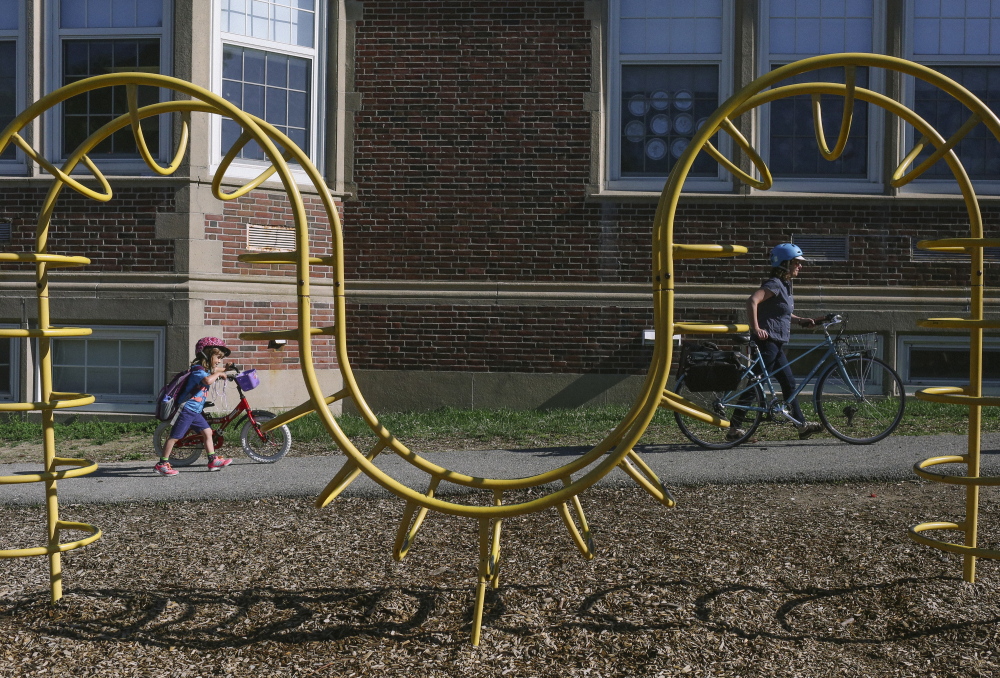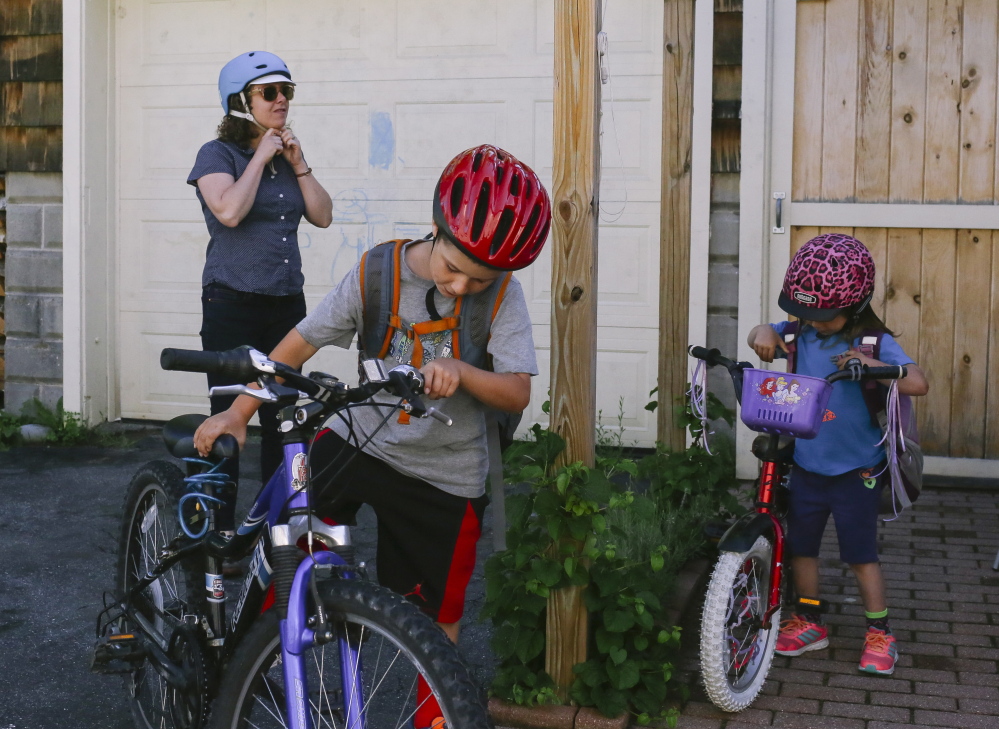Jennifer Claster moved from rural Vermont to the Portland area six years ago because she wanted to get places without driving all the time. She started walking to work, but bicycling on city streets scared her.
Claster’s boyfriend helped her gain confidence by riding with her at first and showing her how to maneuver in traffic. She now bikes from her South Portland home to her job in downtown Portland several times a week during the warmer months.
“I am a lot more relaxed on days when I bike,” says Claster, a landscape architect at Wright-Pierce. “I have a better attitude when I get to work and feel better at the end of the day.”
Throughout Maine, only 0.5 percent of commuters bike to work, and 4 percent walk, according to the U.S. Census Bureau’s American Community Survey. But the numbers are much higher in the state’s urban areas. In Portland, 1.7 percent of commuters bike and 12.9 percent walk.
Nationally, the number of bicycle commuters remains very small (0.6 percent). Even so, that number rose about 60 percent between 2000 and 2012, the Census Bureau reported. During that same period, the number of pedestrian commuters stabilized after years of decline.
Those who integrate walking and bicycling into their daily commutes say it brings many benefits. They save money on gas, car repairs and parking. They take in the beauty of their surroundings and greet neighbors along the way. They arrive at work more focused and end their day with a chance to unwind.
I recently joined Claster and a family with two young children on their bicycle commutes. In the months ahead, I plan to share more commuting experiences.
Claster lives near Southern Maine Community College. She begins her morning ride in a bike lane, then crosses the Casco Bay Bridge.
“This is my favorite part!” Claster says gleefully, as she whizzes past traffic stuck on the Portland end of the bridge. She follows a wiggly route through downtown that avoids steep hills, riding a total of about 4 1/2 miles to her office on Washington Avenue.
Claster has had a couple of scary encounters with cars, including one that took a right directly in front of her. Most days, her biggest challenges are avoiding debris, potholes and cars parked in the bike lane. Biking takes her about five minutes longer than driving to work. In winter, she often catches the bus to Portland and then walks 15 minutes to her office.
Claster’s main reason for biking is that she wants to lower her carbon footprint. But she also likes the way that biking adds a workout to her day without her thinking about it. Riding over the bridge gives her beautiful views of downtown Portland.
The pedestrians she passes often smile and wave.
“I like that connection you have with other people,” she says.
FAMILY GETS THERE BY BIKE
Commuting by bicycle with two young children might seem daunting. But it’s just part of the daily routine for Maryann Welsch and Derek Pelletier of Portland.
After packing snacks and tying sneakers, Welsch and the children strap on their helmets. Levi Pelletier, 8, takes off on a bike to join a friend for the three-block ride to Longfellow Elementary School. Charlotte Pelletier, 5, has been riding without training wheels for a year. She grins proudly as she pedals past her mother on the path to the school playground.
Welsch gives her daughter kisses and high-fives, then bikes downtown to her job at an environmental consulting firm. Derek Pelletier, who also works downtown, does the afternoon pickup.
Welsch and Pelletier chose to live in the Deering neighborhood because from their home it is easy to get to places on foot or bike. They share a car. They also have a cargo bike that Welsch describes as “our version of a station wagon,” with room for both children to ride in the back.
Once Levi and Charlotte turned 6 months old, their parents began transporting them to daycare in a trailer hitched to their bikes. These days, Welsch said her children feel a “great sense of accomplishment” from being able to bike places on their own. In the winter, she usually walks with them to school.
Welsch’s employer, Aecom, provides employees with the federal bicycle commuting benefit. She can get up to $20 per month to cover the cost of bicycle tuneups and repairs.
I asked Welsch what she would do if she were at work and needed to reach her children quickly in an emergency. She pointed out that it would take her about the same amount of time to bike to their school as it would to get a car from a parking garage and drive there.
Welsch says bike commuting works for her family because “it’s our habit. It’s just as easy for us to get places on our bikes as in a car.”
And here is good news from the Maine Legislature: Pedestrians and bicyclists will have added protection thanks to the passage of L.D. 1301, the so-called “vulnerable users” law. See my April 19 column for more information.
Shoshana Hoose is a freelance writer who bicycles in Greater Portland and beyond. Contact her at shoshanahoose@gmail.com.
Copy the Story LinkSend questions/comments to the editors.




Success. Please wait for the page to reload. If the page does not reload within 5 seconds, please refresh the page.
Enter your email and password to access comments.
Hi, to comment on stories you must . This profile is in addition to your subscription and website login.
Already have a commenting profile? .
Invalid username/password.
Please check your email to confirm and complete your registration.
Only subscribers are eligible to post comments. Please subscribe or login first for digital access. Here’s why.
Use the form below to reset your password. When you've submitted your account email, we will send an email with a reset code.